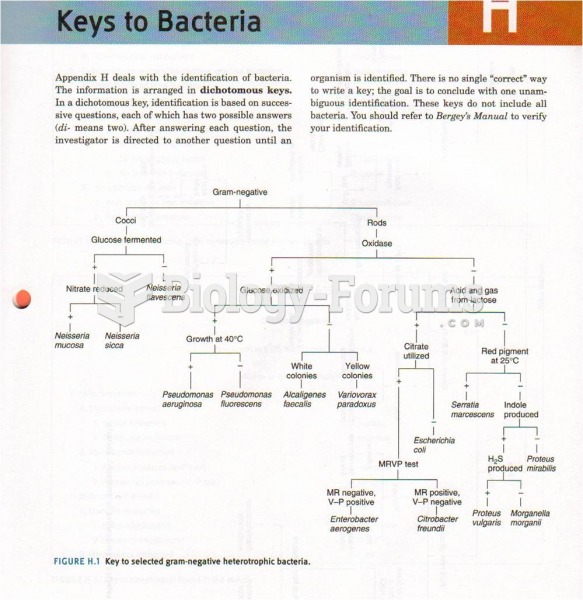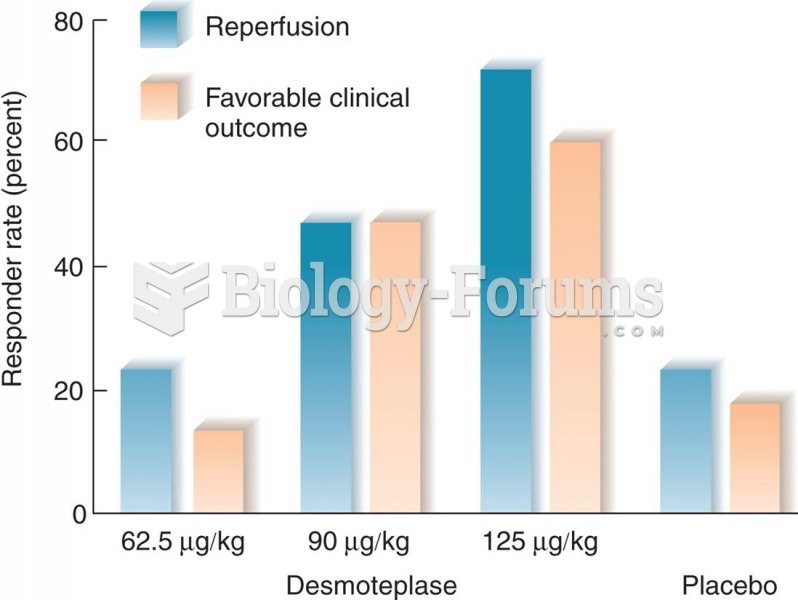Answer to Question 1
Infertility, sometimes called impaired fertility, is typically defined as the lack of conception by a heterosexual couple after 12 consecutive months of trying to become pregnant; that is, having regular, unprotected intercourse. In the United States, the number of couples who meet this definition of infertility is estimated to be approximately 10 percent, which works out to approximately 5 million couples.
Causes. Research has shown that the main causes of infertility break down as follows: 25 percent due to a male sperm factor (e.g., low number, poor quality, or low motility), 20 percent due to a female ovarian problem (e.g., no ovulation or poor quality ova), 14 percent due to a female tubal problem (e.g., fallopian tube blockage), and 41 percent due to other problems, or there is no identifiable problem in either partner (unexplained infertility).
Testing. The main test for the male is a semen analysis, in which a sample of the man's semen (usually gathered through masturbation into a sterile cup) is analyzed microscopically to check for adequate numbers, movement, and formation of the man's sperm cells (a do-it-yourself home semen analysis kit now exists). For the woman, tests may include a hysterosalpingogram, also (thankfully) referred to as the HSG, an X-ray that allows the doctor to view the interior of the uterus and fallopian tubes to check for malformations or blockages. Sometimes doctors need to have a direct, internal look at the ovaries, fallopian tubes, and uterus. This is accomplished with a laparoscopy, in which a tube with a tiny camera and light is inserted through a very small incision in the abdomen.
Treatment options. Several fertility drugs such as clomiphene citrate (brand names, Clomid and Serophene) have been developed to stimulate ovulation in women and the drug may assist in sperm production and quality in men. Surgical procedures may be effective in some cases to unblock fallopian tubes, repair testicular or related disorders, or remove cysts or scar tissue from the uterus, ovaries, or fallopian tubes.
Intrauterine insemination, often referred to as artificial insemination, is a rather simple process of inserting a small tube through the woman's cervix and injecting sperm cells directly into the uterus.
Four methods of ART are in current use:
- In Vitro Fertilization (IVF). This technique is probably the best known, the one said to produce test tube babies. It does not involve growing a baby in a test tube, of course, but rather a process in which ova (eggs) are extracted from the woman's ovaries during a laparoscopy, fertilized with sperm in a shallow dish in the lab (in vitro means in glass), and then placed into her uterus through her cervix approximately three days later. Typically, three to five zygotes are transferred to help ensure at least one pregnancy, and thus this procedure increases the chances of multiple births.
- Gamete Intrafallopian Transfer (GIFT). This procedure is nearly the same as IVF except that fertilization occurs naturally in the fallopian tube. As in IVF, eggs are retrieved from the ovaries and mixed with the father's sperm in the lab. The sperm and eggs are then transferred to the fallopian tubes for conception using laparoscopic surgery. This method can be used only for women who have at least one healthy fallopian tube.
- Zygote Intrafallopian Transfer (ZIFT). ZIFT combines IVF and GIFT. The process for harvesting and fertilizing the ova is exactly the same as in IVF, but instead of transferring the zygotes to the uterus, they are placed into the fallopian tube using the laparoscope.
- Intracytoplasmic Sperm Injection (ICSI). This ART method was developed to assist a couple when the man's sperm production is very low, the cells have poor shape or motility, or some other problem exists with his sperm or semen that makes the other ART methods ineffective. In ICSI, a single sperm cell from the man is injected using a microscopic needle, directly into each harvested egg from the woman. The resulting zygote is then transferred after a few days into the mother's uterus.
Answer to Question 2
Answer: C







